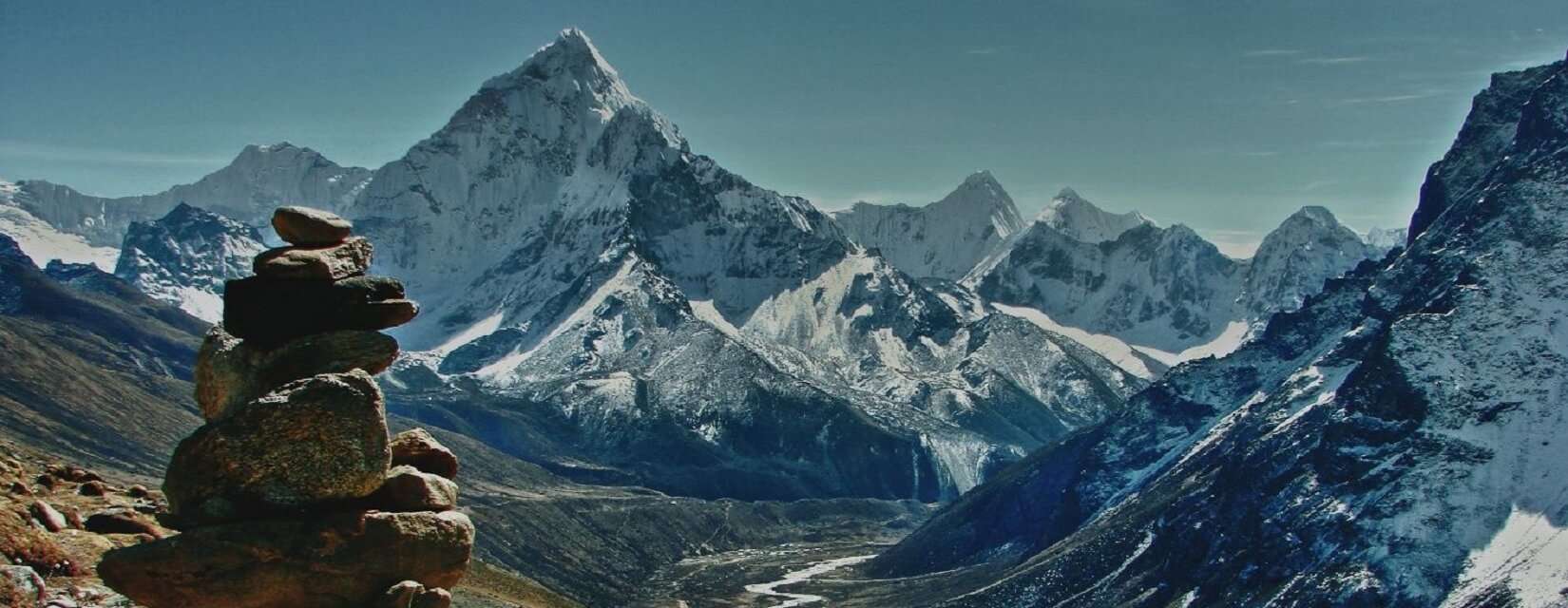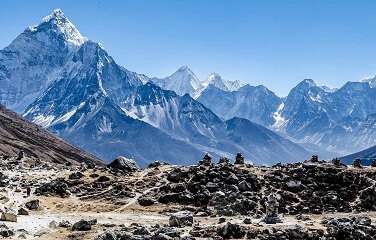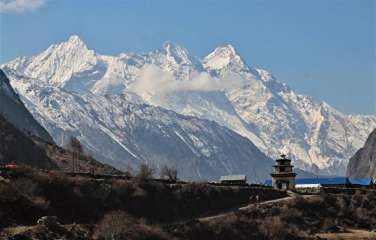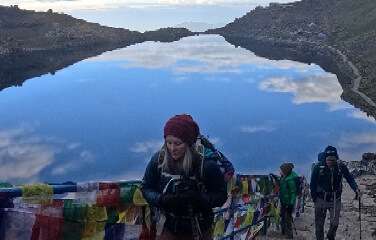Highlights

- Trek through Sagarmatha National Park, home to hundreds of flora & fauna
- Spend a couple of nights in the famous Namche Bazaar and stunning Gokyo village
- Take a thrilling flight to Lukla
- Visit the oldest and the biggest monastery in the Khumbu region, the Tengboche monastery
- Explore beautiful Gokyo Lakes
- Experience the rich culture and lifestyle of Sherpas
- Explore Everest Base Camp
- Witness gorgeous sunrise and a 360-degree view of Everest from Kala Patthar viewpoint
- Cross three challenging passes, Cho La Pass, Kongma La Pass, and Renjo La Pass
Itinerary
Day 01:Arrival in Kathmandu
Day 02:Kathmandu sightseeing and trek preparation
Day 03:Fly to Lukla and trek to Phakding [2,651m] [40 minutes flight] & [3-4 hours trek]
Day 04:Phakding to Namche Bazaar [3,438m, 5-6 hours]
Day 05:Rest and acclimatization at Namche Bazaar [3,438m]
Day 06:Namche Bazaar to Tengboche [3,860m, 5-6 hours]
Day 07:Tengboche to Dingboche [4,360m, 5-6 hours]
Day 08:Acclimatization and rest day at Dingboche [4,360m]
Day 09:Dingboche to Chhukung [4,750m] & climb Chhukung Ri [5,546m, 6–7 hours]
Day 10:Cross to Kongma La Pass [5,535m/18,159ft] and trek to Lobuche [4,940m, 6-7 hours]
Day 11:Lobuche to Gorak Shep [5,170m] & visit Everest Base Camp [5,364 m/17,594 ft] [6-7 hours]
Day 12:Gorak Shep to Kala Patthar [5,545 m/18,192 ft] & trek to Lobuche [4,940m, 8-9 hours]
Day 14:Trek to Gokyo [4,800m] & via Cho La pass [5,368m/17,611 ft] [7-8 hours]
Day 15:Rest day in Gokyo: Climb Gokyo Ri [5,357m/17,575 ft], tour 4th and 5th Gokyo lakes; 3-4 hours
Day 16:Gokyo to Marlung [4,210m] & via Renjo La Pass [5,360m/17,585 ft] [7-8 hours]
Day 17:Marlung to Namche Bazaar [3,440m, 5-6 hours]
Day 18:Namche Bazaar to Lukla [2,800m, 6-7 hours]
Day 19:Fly from Lukla to Kathmandu [1,350m, 40 minutes]
Day 20:Final departure
For this the detail about this itinerary click here.
How difficult of Everest three passes trek?

If your inquiry is as stated above, then the answer is obviously "yes." The trek is one of the most difficult hikes in the world, as was previously reported. The journey begins calmly and slowly at first, but as you cover more ground, challenges will start to appear. The road begins to rise vertically, become rougher, and grow increasingly lovely. Most of the time, the altitude stays over 3000 meters. The higher you get, the more difficult this walk becomes.
A trekker on this route must walk for about 7 hours per day, to put it numerically. Additionally, this walk covers a distance of almost 166 KM (103 miles). Now that you know how difficult the walk is, you can readily guess. It is never simple to walk for seven or more hours on muddy, hilly terrain. Additionally, you will be moving your body at great altitudes. Along with Everest Base Camp, Kala Patthar, and Gokyo Ri, you'll ascend three lofty passes. These locations are all over 5,300 meters above sea level. The walk becomes much more challenging due to its high altitude.
The trek's lower elevations are simpler to navigate and include no high altitude or altitude sickness. However, as you go on this quest, problems begin to follow you around constantly. The hardest times are more notably those when scaling the three high passes. When you are at or above 5,000 meters, anything can happen at any time. Based on all of these features, the journey is considered to be the most difficult trek in Nepal. But you already know where the difficult paths end. You must therefore become ready because it is your final stroll in life.
The difficulty of the Everest Three Passes Trek's weather and temperature

Since you are aware that the weather in the Khumbu region (the Everest region) is erratic, you should exercise caution if you decide to trek here off-season. The difficulty of the Everest Three passes is further impacted by the area's poor weather. While hiking during the busiest time of year, the weather is typically pleasant and fairly consistent. Even so, the nighttime temperature decreases quickly and erratically. Additionally, it can be very uncomfortable to hike in this area when the temperature is below freezing, so bring plenty of layers and warm inner clothing.
Weather-related delays can even affect the trek's beginning. Taking a flight to Lukla is the only way to get to the Everest region in a very short amount of time. As a result, the early flight from Kathmandu to Lukla frequently gets canceled owing to inclement weather. To hike, the weather must be suitable for a plane to arrive at the Lukla airstrip without incident. As a result, this airport is regarded as one of the riskiest airports in the world. To ensure a smooth walk while hiking in the Everest region, plan on taking a few additional days. Additionally, there is a great chance that an avalanche will occur, therefore you should exercise extra caution while climbing the Everest Three Passes Trek.
For the Independent Hiker, it's difficult

YES! This hike can be completed without a guide and without company. The EBC classical route really has a higher number of individual trekkers. On the Three Pass Trail, however, there are hardly any hikers who go it alone. primarily due to the trail passing through a moving glacier and the continuously changing weather conditions. That implies that the pathways near the glacier might be destroyed every day!
The most hazardous section of the route to the first pass is between Chukung and Labouche. The glacier in this region is said to be moving more quickly than usual. Before going to High Pass, we suggest you learn as much as you can from the locals. Bring your own GPS device, and be sure to follow the route exactly as it is indicated. Despite the fact that a hiker can actually complete the Three Passes journey unaided. However, we advise going on a hike with a local guide for your own safety.
Related packages in the Everest region





